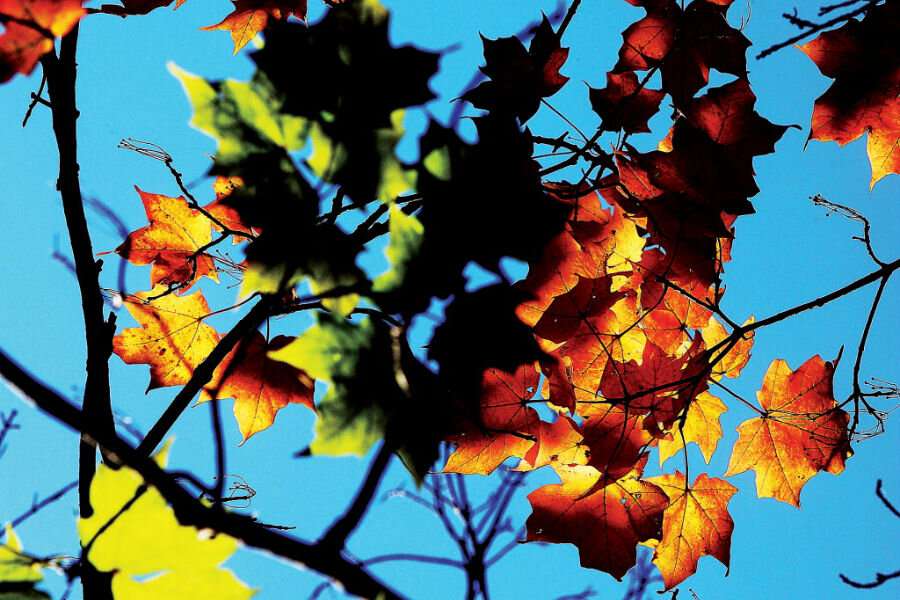First day of autumn: Why do the leaves change color anyway?
Loading...
Ready or not, it’s time for residents of the Northern Hemisphere to pull out cardigans and start planning leaf-peeping excursions.
Residents of northern US states may have already spotted the first splashes of fall color, but officially, autumn began at 10:29 pm EDT Monday night, making Tuesday the first full day of fall.
Every autumn, millions of Americans pack up the car and head north to take in fall colors. Vermont, the Northeast’s Eden of autumnal splendor, expects to receive 3.5 million visitors in the next few weeks.
But many Americans watch the changing of the leaves with trepidation. After all, in a few months, the brilliant display will give way to views of bare trees silhouetted against gray skies.
Why exactly to the leaves of deciduous trees change color? And why do they eventually fall off?
To understand why leaves on deciduous trees do what they do, you first have to understand the role the leaves play in the trees’ life processes, explains Joseph E. Armstrong, a professor of botany emeritus at the Illinois State University in Normal and author of the new book “How the Earth Turned Green: a brief 3.8 billion year history of plants.”
Trees, like all plants, need solar energy and carbon dioxide. Plants maximize these resources by increasing their surface area. The most efficient way for a woody plant to do that is to produce lots of leaves.
The large leafy crowns atop American oaks, maples, and other deciduous trees serve as excellent collectors of solar energy. But with all that surface area exposed to the air, leaves also lose a lot of water through transpiration.
During the spring and summer months, that’s not much of a problem because the tree’s roots can replenish that lost moisture by drawing from ground water. But when winter rolls around, the soil freezes, locking up the moisture. If deciduous trees kept their leaves, they would continue to transpire vital water stores without any means of replenishing them.
Contrary to popular belief, not all deciduous plants live in temperate climes. But those that live in the tropics do not display the same vibrant fall colors as we see in more temperate regions.
“The color deals more with the phenomenon where the cold comes in and causes a different hormonal change,” Armstrong says.
The green seen during spring and summer months is the result of chlorophyll production. As temperatures drop in the late summer early fall, trees stop producing chlorophyll and the leaves’ true colors come through.
Then, near the end of the season, the leaves jump ship.
“What happens is that there is a hormone that’s being produced by a happy functional leaf that maintains the cells at the base of the leaf,” Armstrong explains. “When that hormone level drops off, then an anatomical change takes place and those cells get weak and that makes the leaves liable to fall.”
Evergreen plants do not lose moisture as readily as their deciduous cousins because they tend to have smaller leaves or needles that are covered in a waxy coating that inhibits transpiration, Armstrong says.
Surprisingly, deciduousness – the dropping of leaves – can also occur outside of temperate climates, Armstrong adds.
Many plants in the African Savannah and deciduous forests of northwestern Costa Rica, for instance, shed their leaves during the dry season.
“These tropical deciduous plants drop their leaves in order to preserve moisture,” Armstrong says. “Then the rest of the tree can sit there inside this nice waterproof bark and wait for the rainy season to come back in.”








